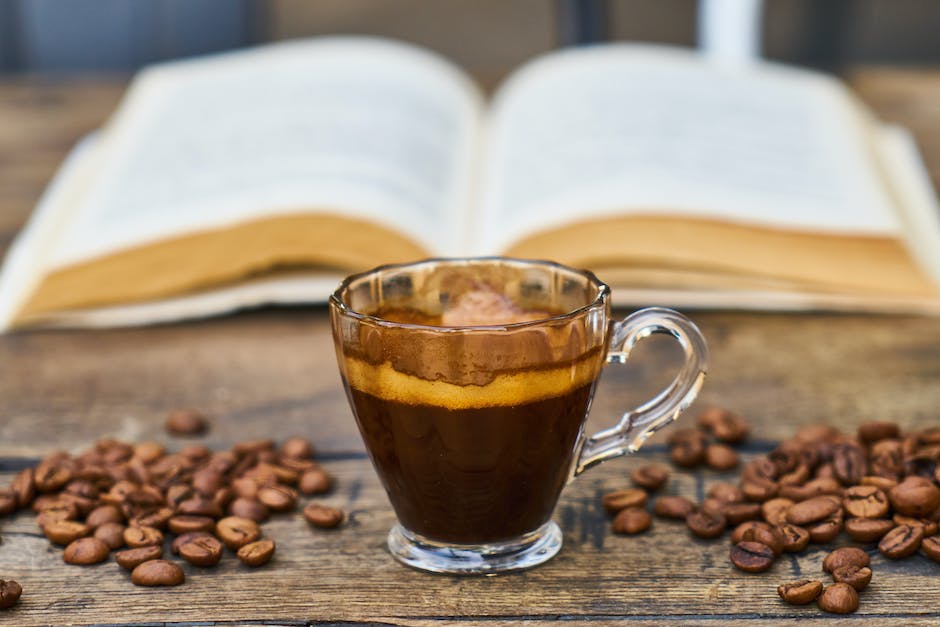-
Table of Contents
Introduction
Coffee and espresso are two popular beverages that are enjoyed by people all over the world. While they may seem similar, there are some key differences between the two. In this article, we will explore the differences between coffee and espresso, including their preparation methods, taste, and caffeine content.
The Origins of Coffee and Espresso
Coffee and espresso are two of the most popular beverages in the world. While they may seem similar, there are some key differences between the two. Understanding these differences can help you choose the right drink for your taste and needs.
The origins of coffee can be traced back to Ethiopia, where it was first discovered in the 9th century. From there, it spread to the Arabian Peninsula and eventually to Europe and the rest of the world. Coffee is made by brewing ground coffee beans with hot water. The resulting drink is typically served hot and can be enjoyed black or with milk and sugar.
Espresso, on the other hand, has a much shorter history. It was first invented in Italy in the early 20th century. Espresso is made by forcing hot water through finely ground coffee beans at high pressure. The resulting drink is much stronger and more concentrated than regular coffee. Espresso is typically served in small cups and can be enjoyed on its own or as the base for other drinks like cappuccinos and lattes.
One of the main differences between coffee and espresso is the brewing method. Coffee is brewed by steeping ground coffee beans in hot water, while espresso is made by forcing hot water through finely ground coffee beans at high pressure. This difference in brewing method results in a different taste and texture. Coffee is typically smoother and less intense than espresso, while espresso is stronger and more concentrated.
Another difference between coffee and espresso is the caffeine content. While both drinks contain caffeine, espresso has a much higher concentration of caffeine than coffee. This is because espresso is made with a higher ratio of coffee to water, resulting in a more concentrated drink. If you’re looking for a quick caffeine boost, espresso is the way to go.
The serving size is also different between coffee and espresso. A typical cup of coffee is around 8-12 ounces, while a shot of espresso is only 1-2 ounces. This means that you’ll need to drink more coffee to get the same amount of caffeine as a shot of espresso. However, if you prefer a larger serving size, coffee may be the better choice for you.
In terms of flavor, coffee and espresso have different profiles. Coffee is typically smoother and less intense, with a range of flavors depending on the type of beans used and the brewing method. Espresso, on the other hand, is stronger and more concentrated, with a bold and intense flavor. If you prefer a milder taste, coffee may be the better choice for you. If you like a strong, bold flavor, espresso is the way to go.
In conclusion, while coffee and espresso may seem similar, there are some key differences between the two. Understanding these differences can help you choose the right drink for your taste and needs. Whether you prefer a smooth and milder taste or a bold and intense flavor, there’s a coffee or espresso drink out there for you. So next time you’re at your local coffee shop, try something new and see which one you prefer!
The Brewing Process: Coffee vs. Espresso
When it comes to coffee, there are many different types and brewing methods to choose from. One of the most popular options is espresso, which is a concentrated form of coffee that is brewed using a specific method. But what exactly is the difference between a regular cup of coffee and an espresso? In this article, we will explore the brewing process of coffee and espresso to understand the key differences between the two.
The Brewing Process: Coffee vs. Espresso
The brewing process for coffee and espresso is quite different. Coffee is typically brewed using a drip method, where hot water is poured over ground coffee beans and allowed to drip through a filter. This method allows for a larger volume of coffee to be brewed at once, and the resulting beverage is typically less concentrated than espresso.
Espresso, on the other hand, is brewed using a special machine that forces hot water through finely ground coffee beans at high pressure. This process results in a small, concentrated shot of coffee that is typically served in a small cup or shot glass. The high pressure used in the brewing process also creates a layer of crema on top of the espresso, which is a creamy, caramel-colored foam that adds to the flavor and texture of the drink.
The Grind
Another key difference between coffee and espresso is the grind of the beans. Coffee beans used for drip coffee are typically ground to a medium or coarse consistency, while espresso beans are ground much finer. This finer grind allows for the hot water to be forced through the coffee at high pressure, creating the concentrated shot of espresso.
The Roast
The roast of the coffee beans also plays a role in the flavor and strength of the resulting beverage. Coffee beans used for drip coffee are typically roasted to a medium or dark roast, which brings out the natural flavors of the beans and creates a rich, full-bodied cup of coffee.
Espresso beans, on the other hand, are typically roasted to a darker roast, which creates a stronger, more intense flavor. The darker roast also helps to create the crema on top of the espresso shot, which adds to the overall flavor and texture of the drink.
The Serving Size
One of the most noticeable differences between coffee and espresso is the serving size. A typical cup of coffee is usually around 8-12 ounces, while an espresso shot is only 1-2 ounces. This smaller serving size is due to the concentrated nature of the espresso, which packs a powerful punch in a small amount.
The Taste
Finally, the taste of coffee and espresso is quite different. Coffee is typically smoother and less intense than espresso, with a milder flavor profile. Espresso, on the other hand, is strong and intense, with a bold flavor that is often described as bitter or nutty.
Conclusion
In conclusion, the brewing process for coffee and espresso is quite different, resulting in two very different beverages. Coffee is typically brewed using a drip method, with a medium or coarse grind and a medium or dark roast. Espresso, on the other hand, is brewed using a special machine that forces hot water through finely ground coffee beans at high pressure, resulting in a small, concentrated shot of coffee with a darker roast and a stronger, more intense flavor. Whether you prefer a smooth cup of coffee or a bold shot of espresso, understanding the differences between the two can help you choose the perfect beverage for your taste preferences.
Caffeine Content: Coffee vs. Espresso
When it comes to coffee, there are many different types and variations to choose from. One of the most popular options is espresso, which is often used as a base for other coffee drinks. But what exactly is the difference between a regular cup of coffee and an espresso? One of the main differences is the caffeine content.
Coffee is typically brewed using a drip method, which involves hot water slowly dripping through ground coffee beans. This process results in a larger volume of coffee with a lower concentration of caffeine. On average, an 8-ounce cup of coffee contains around 95 milligrams of caffeine.
Espresso, on the other hand, is made by forcing hot water through finely ground coffee beans at high pressure. This results in a smaller volume of coffee with a higher concentration of caffeine. A single shot of espresso, which is typically around 1 ounce, contains around 63 milligrams of caffeine. However, many espresso drinks, such as lattes and cappuccinos, contain multiple shots of espresso, which can significantly increase the caffeine content.
It’s important to note that the caffeine content of coffee and espresso can vary depending on factors such as the type of beans used, the brewing method, and the serving size. Additionally, some coffee shops may use different brewing methods or espresso machines that can affect the caffeine content of their drinks.
While espresso may have a higher concentration of caffeine, it’s not necessarily the best choice for those looking to limit their caffeine intake. This is because many espresso drinks, such as lattes and cappuccinos, are often made with added milk and sugar, which can significantly increase the calorie and sugar content of the drink.
Ultimately, the choice between coffee and espresso comes down to personal preference. Coffee is a great option for those who enjoy a larger volume of coffee with a milder flavor, while espresso is ideal for those who prefer a stronger, more concentrated coffee flavor. Additionally, espresso is often used as a base for other coffee drinks, such as lattes and cappuccinos, which can provide a wider range of flavor options.
In conclusion, while coffee and espresso may seem similar, there are significant differences in their caffeine content. Coffee is typically brewed using a drip method, resulting in a larger volume of coffee with a lower concentration of caffeine. Espresso, on the other hand, is made by forcing hot water through finely ground coffee beans at high pressure, resulting in a smaller volume of coffee with a higher concentration of caffeine. Ultimately, the choice between coffee and espresso comes down to personal preference and the desired flavor and caffeine content.
Taste and Flavor Profile: Coffee vs. Espresso
Coffee and espresso are two of the most popular beverages in the world. While they both come from the same source, coffee beans, they are quite different in taste and flavor profile. In this article, we will explore the differences between coffee and espresso.
Coffee is a brewed beverage made from roasted coffee beans. It is typically brewed using a drip coffee maker or a French press. The brewing process involves pouring hot water over the coffee grounds and allowing the water to extract the flavor and aroma from the beans. The resulting beverage is a mild, smooth, and flavorful drink that is enjoyed by millions of people around the world.
Espresso, on the other hand, is a concentrated form of coffee that is made by forcing hot water through finely ground coffee beans. The brewing process involves using a specialized machine called an espresso machine, which uses high pressure to extract the flavor and aroma from the beans. The resulting beverage is a strong, bold, and intense drink that is typically served in small portions.
One of the main differences between coffee and espresso is the brewing method. Coffee is brewed using a slower, gentler method that allows the water to extract the flavor and aroma from the beans over a longer period of time. Espresso, on the other hand, is brewed using a faster, more intense method that extracts the flavor and aroma from the beans in a matter of seconds.
Another difference between coffee and espresso is the grind size of the beans. Coffee beans are typically ground to a medium-coarse consistency, while espresso beans are ground to a very fine consistency. This allows the water to extract more flavor and aroma from the beans in a shorter amount of time.
The taste and flavor profile of coffee and espresso are also quite different. Coffee is typically milder and smoother in flavor, with a subtle sweetness and a hint of bitterness. Espresso, on the other hand, is much stronger and bolder in flavor, with a more pronounced bitterness and a hint of sweetness.
The texture of coffee and espresso is also different. Coffee is typically thinner and more watery in texture, while espresso is thicker and more syrupy in texture. This is due to the higher concentration of coffee solids in espresso, which gives it a more viscous texture.
In terms of caffeine content, espresso is typically higher in caffeine than coffee. This is because espresso is brewed using a higher concentration of coffee beans, which results in a higher concentration of caffeine in the final beverage. However, the actual caffeine content can vary depending on the type of coffee or espresso bean used, as well as the brewing method.
In conclusion, coffee and espresso are two very different beverages with distinct taste and flavor profiles. While they both come from the same source, coffee beans, they are brewed using different methods and have different grind sizes, textures, and caffeine content. Whether you prefer a mild and smooth cup of coffee or a strong and bold shot of espresso, there is no denying that both beverages have their own unique appeal.
Uses and Applications: Coffee vs. Espresso
Coffee and espresso are two of the most popular beverages in the world. While they may seem similar, they are actually quite different. In this article, we will explore the differences between coffee and espresso, and their uses and applications.
Coffee is a brewed beverage made from roasted coffee beans. It is typically served hot, but can also be served cold. Coffee is usually brewed in a drip coffee maker, French press, or percolator. The brewing process involves pouring hot water over ground coffee beans, which extracts the flavor and aroma from the beans.
Espresso, on the other hand, is a concentrated form of coffee. It is made by forcing hot water through finely ground coffee beans at high pressure. This results in a small, concentrated shot of coffee that is thicker and stronger than regular coffee. Espresso is typically served in small cups, and is the base for many popular coffee drinks, such as cappuccinos and lattes.
One of the main differences between coffee and espresso is the brewing method. Coffee is brewed by pouring hot water over ground coffee beans, while espresso is made by forcing hot water through finely ground coffee beans at high pressure. This results in a different flavor profile for each beverage. Coffee is typically milder and less intense than espresso, while espresso is stronger and more concentrated.
Another difference between coffee and espresso is the caffeine content. While the amount of caffeine in each beverage can vary depending on the type of coffee bean and the brewing method, espresso generally has more caffeine than coffee. This is because espresso is more concentrated, so a smaller amount of liquid contains more caffeine than a larger amount of coffee.
The uses and applications of coffee and espresso also differ. Coffee is typically consumed in the morning or throughout the day as a pick-me-up or social beverage. It is often enjoyed with breakfast or as a mid-morning or mid-afternoon break. Espresso, on the other hand, is often consumed as a quick shot of caffeine to provide a boost of energy. It is also the base for many popular coffee drinks, such as cappuccinos and lattes.
In terms of culinary applications, coffee and espresso can be used in a variety of ways. Coffee is often used as a flavoring agent in desserts, such as tiramisu and coffee cake. It can also be used as a marinade for meats or as a rub for grilled foods. Espresso is often used as a flavoring agent in desserts, such as chocolate truffles and espresso brownies. It can also be used as a base for sauces or as a seasoning for meats.
In conclusion, while coffee and espresso may seem similar, they are actually quite different. Coffee is a brewed beverage made from roasted coffee beans, while espresso is a concentrated form of coffee made by forcing hot water through finely ground coffee beans at high pressure. The brewing method, caffeine content, and uses and applications of each beverage also differ. Whether you prefer coffee or espresso, both beverages have their own unique flavor profiles and culinary applications.
Conclusion
Conclusion: In summary, the main difference between coffee and espresso lies in the brewing method, the grind size, and the amount of water used. Coffee is brewed by passing hot water through coarsely ground coffee beans, while espresso is made by forcing hot water through finely ground coffee beans under high pressure. Espresso is typically stronger and more concentrated than coffee, with a thicker crema and a bolder flavor profile. However, both coffee and espresso can be enjoyed in a variety of ways and are beloved by coffee lovers around the world.





